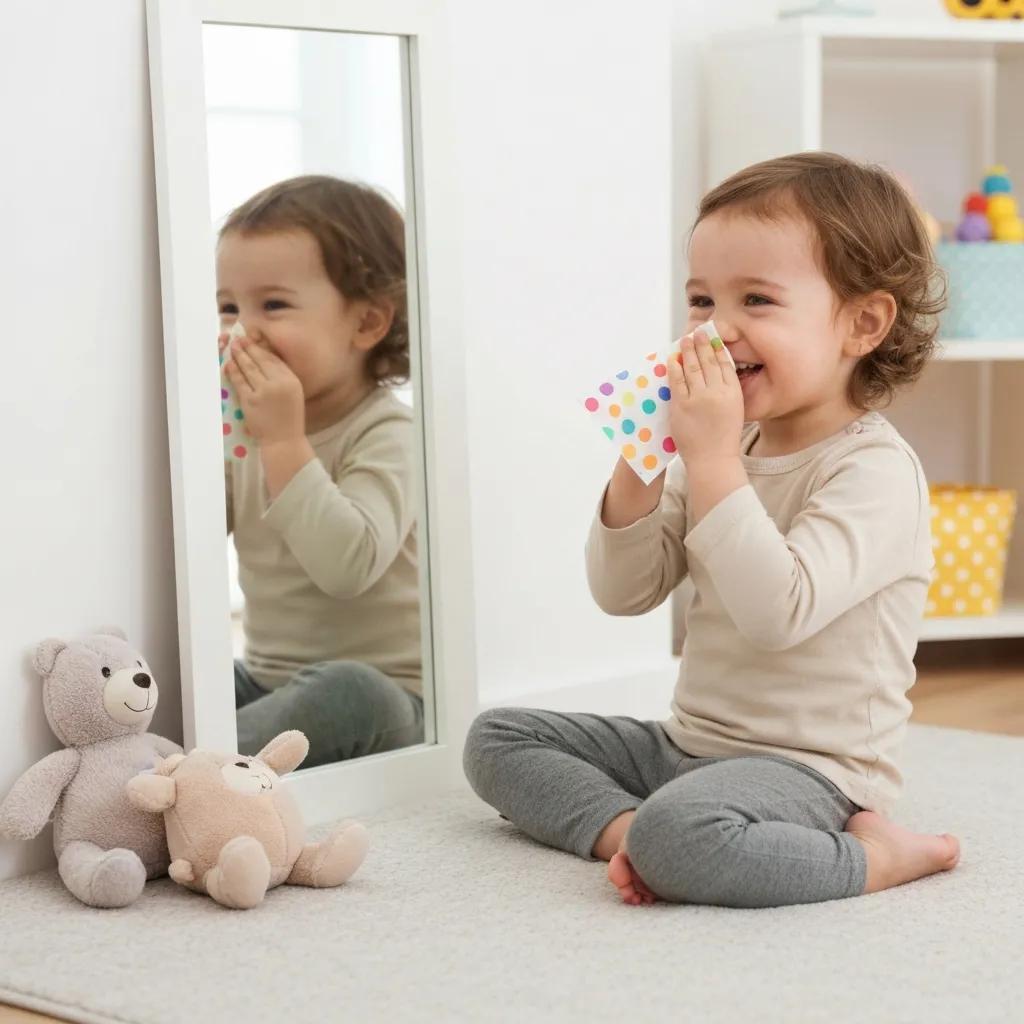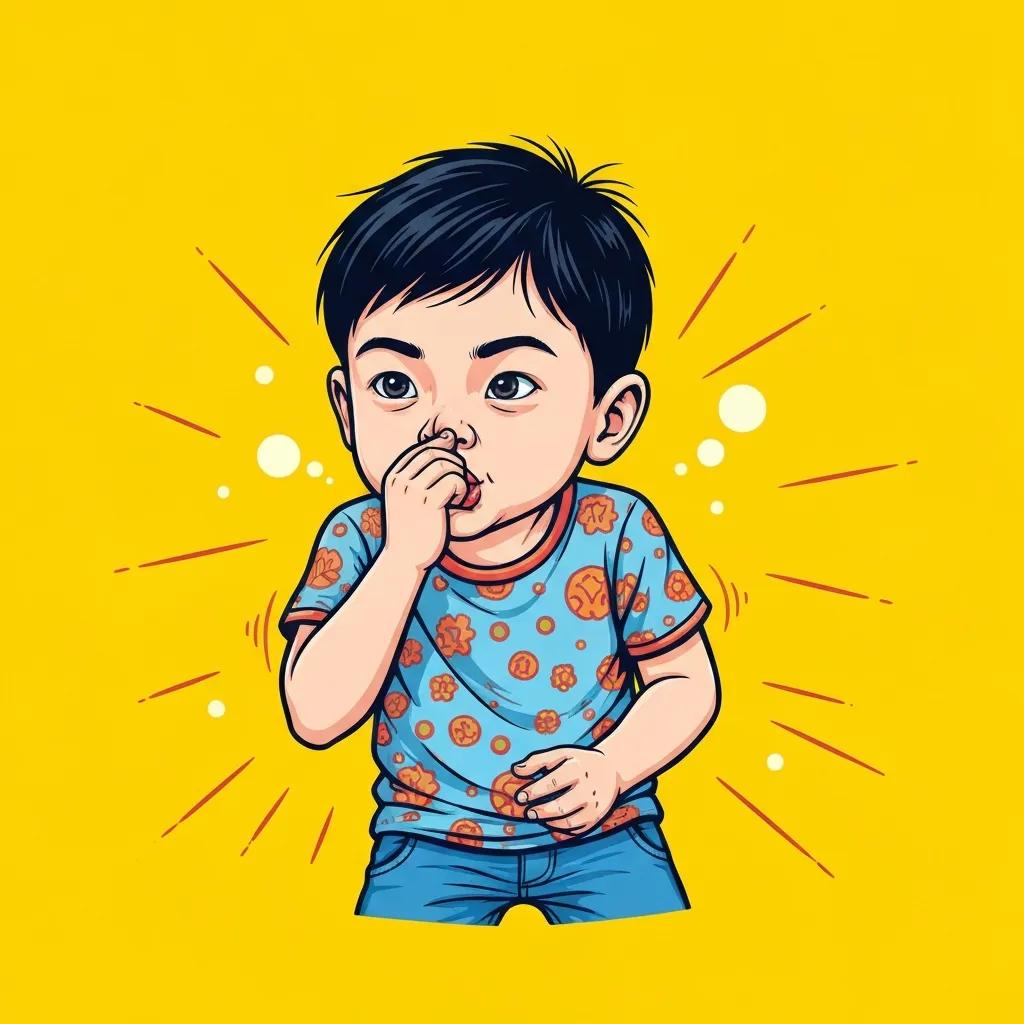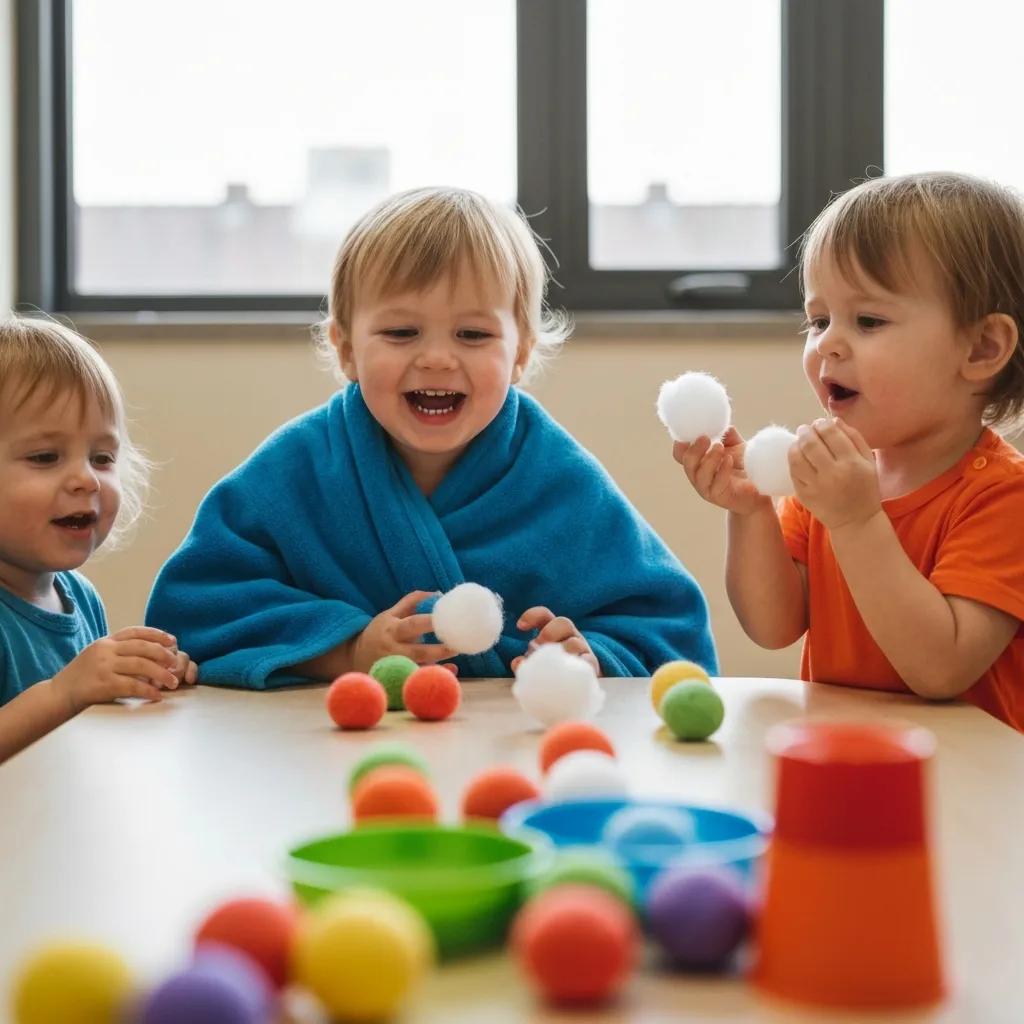
Giggles and Sniffles: Fun Nose Care for Young Children
How to Teach Toddlers Proper Nose Care: Step-by-Step Tips for Effective Toddler Nasal Hygiene

Toddlers commonly struggle with nasal hygiene because the motor control and social routines required for reliable nose blowing develop gradually between ages two and four. This guide explains when to start teaching nose care, how to break the skill into micro-steps, safe alternatives for clearing congestion, and playful games that make practice enjoyable. You will learn clear, developmentally appropriate cues for readiness, a concise step-by-step HowTo sequence for teaching tissue use and one-nostril technique, plus practical strategies for handling resistance using positive reinforcement. The article also compares saline, aspirators, and humidifiers in an easy reference table and outlines health benefits such as fewer ear infections, better sleep, and increased self-care independence. Read on for evidence-aligned, play-based activities and educator-tested tips that help children master nasal hygiene while preserving comfort and routine consistency.
When Is the Right Age to Teach Toddlers Nose Blowing and Nasal Hygiene?
Teaching nose blowing typically begins when a child can follow simple instructions and show basic breath control, usually between ages 2 and 4. This age window reflects developing oral-motor coordination and the cognitive ability to imitate adults, which together enable the toddler to learn a multi-step self-care routine. Starting with brief, repeated practice sessions reduces frustration and builds muscle memory for blowing air steadily, and this gradual approach supports success without pressure. The next subsections outline common developmental milestones and simple home checks to confirm readiness before systematic practice.
What Are the Typical Developmental Milestones for Nose Blowing in Toddlers?
Typical milestones that indicate progress toward independent nose blowing include the ability to blow out candles, imitate an adult who blows, and coordinate breath with mouth movements. Around 18–24 months many children can blow air purposefully through the mouth; by 2–3 years some will imitate nose or mouth blowing and begin to follow two-step instructions. Gross motor coordination and oral motor strength develop at different rates, so a child who can blow a bubble or a feather with steady air is often physically ready for nose-blowing practice. Observe these behaviors and use them to plan short practice sessions that match your toddler’s abilities.
How to Recognize When Your Toddler Is Ready to Learn Nose Care Skills

Recognize readiness by trying a few quick, nonthreatening tests: ask the child to blow a tissue, blow a bubble in water, or imitate you exhaling sharply through the mouth. If the child follows, maintains a steady exhale for a couple of seconds, and shows curiosity rather than avoidance, those are reliable signals to begin guided teaching. Avoid forcing the skill; if the child resists, pause and return later with a playful activity that builds the same motor pattern. Gradual, curiosity-led introductions reduce power struggles and make the next step—formal teaching—more productive.
What Are the Best Step-by-Step Methods to Teach Toddlers to Blow Their Nose?
Teaching nose blowing works best when adults model the action, break the process into tiny steps, and reinforce each micro-skill with praise and repetition. Start with breath-control games, then practice mouth-based blowing, move to blowing one nostril at a time, and finally introduce tissues and disposal habits. Emphasize hygiene—handwashing before and after, proper tissue use, and gentle blowing—to prevent spread of germs and avoid pressure buildup. Below are practical, stepwise instructions and a short EAV-style comparison of popular teaching methods to help you pick activities that match your child’s age and temperament.
Parents and caregivers should use short, clear scripts during demonstration and allow the child to imitate while offering encouragement, which keeps learning tied to observable outcomes and a predictable routine. The next subsections cover caregiver modeling and detailed step breakdowns including the one-nostril technique.
How Can Parents Model Proper Nose Blowing and Hygiene for Toddlers?
Modeling is the fastest way to teach nose care because toddlers learn by imitation: demonstrate slow, exaggerated nose blowing in front of a mirror while narrating the actions simply. Use phrases like “big breath in, blow out” and let the child mimic you, providing props such as colorful tissues to keep attention. In group settings, educators model the same actions repeatedly so children see consistent expectations; replicating that at home builds cross-environment consistency. Conclude modeling with a wash-and-dispose routine to normalize hygiene and transition naturally into practice.
What Are the Key Steps to Teach Nose Blowing Effectively and Safely?
A clear sequence reduces confusion and supports muscle memory: first teach steady exhale through the mouth, then practice blowing air through the nose, next introduce tissues and one-nostril blowing, and finally reinforce disposal and handwashing. Keep each practice under a minute initially and repeat several times a day within routines like before nap or after play to embed the habit. Use neutral language and small choices (“Do you want the blue or green tissue?”) to increase buy-in and avoid power struggles. If congestion prevents effective blowing, use saline or aspirator techniques described later before resuming training.
How to Use Tissues and Teach One Nostril at a Time
Teaching tissue use and one-nostril technique prevents pressure buildup and makes nose-blowing more effective: show how to hold a tissue over the nose, gently press one nostril closed, and ask the child to blow through the open nostril. Demonstrate slowly, offer hand-over-hand help if needed, and praise any attempt to coordinate the action. Use tissues that are soft but sturdy and teach immediate disposal followed by handwashing to reduce germ spread. Troubleshoot by practicing with a lightweight prop, like a cotton ball or tissue held at a short distance, until the child gains confidence.
Research indicates that nose-blowing can be performed with or without pinching the nostrils, with the choice of method potentially influencing exhalation pressure.
Nose Blowing Techniques: Pinch vs. No Pinch
Nose-blowing is the act to get rid of nasal mucus by forcefully exhale through the nose. The handkerchief or facial tissues were usually used to cover the nose, prevent the mucus or droplet spreading and remove the mucus remnant from the nose5. This procedure can be done by pinching the nose to generate more exhalation pressure or without pinching.
Comparison of nasal patency after nose-blowing between pinch versus no pinch method: A randomized controlled trial, P Piromchai, 2021
How Can Fun Games and Activities Help Teach Nose Blowing to Toddlers?

Games accelerate learning by creating visual feedback, short reward loops, and repeated practice embedded in play, which builds the motor pattern for nose blowing without pressure. Simple activities let toddlers see the result of their breath—moving a cotton ball, fogging a mirror, or making bubbles in water—which links action to consequence and strengthens imitation. The games below include materials, age suitability, and one-line learning goals so you can choose appropriate activities and progress them as the child improves. After the list, an explanation clarifies how these playful methods embed nasal hygiene into everyday routines.
What Are Easy and Effective Nose Blowing Games for Toddlers?
- Cotton Ball Race: Blow a cotton ball across a table using steady nose or mouth air to encourage sustained exhale.
- Foggy Mirror: Have the child breathe or blow on a mirror to make fog and then “erase” it with a finger to practice directed breath.
- Bubble Blowing in Water: Use a straw or gentle mouth blow into water to create bubbles, teaching force modulation and visual feedback.
- Elephant Trunk Game: Use a rolled-up paper “trunk” and blow a light pom-pom into a target to encourage repetition.
Each game targets the same motor skills—controlled exhale, breath direction, and repetition—while staying playful and short to match toddler attention spans. These activities lead naturally into structured tissue-based practice.
How Do Games Like Cotton Ball Races and Foggy Mirror Encourage Nasal Hygiene?
Games provide immediate visual feedback that links the child’s breath to a measurable effect, reinforcing the cause-and-effect learning that supports skill acquisition. The cotton ball race rewards steady airflow, foggy mirror shows the child their breath pattern, and bubble blowing trains breath force while being intrinsically motivating. Progress by shortening the distance or adding small challenges to build strength and control, and integrate games into daily rituals like morning getting-ready time to maintain consistency. Over time, the motor patterns practiced in games transfer to tissue-based nose blowing and routine hygiene behaviors.
KIDazzle Child Care is committed to fostering self-care skills through engaging activities. Families in the Hampton area can discover more about their specific programs and enrollment options.
How to Manage Toddler Resistance and Encourage Positive Nose Care Habits?
Resistance is common; managing it requires empathy, micro-steps, and predictable reinforcement that make the skill feel safe and achievable. Offer choices to build agency, use brief practice windows to avoid meltdown, and make success visible through stickers or praise to create a reward loop. Educators and caregivers who model the same language and routines create consistency across home and early childhood settings, which accelerates habit formation. The next subsections provide scripts for gentle persuasion and practical reinforcement schedules that help fade rewards while keeping the habit stable.
What Are Gentle Strategies to Overcome Toddler Refusal to Blow Their Nose?
Use choice, play, and small achievable tasks to reduce refusal: present two tissue colors to choose from, turn practice into a short game, or break the skill into a one-second blow that’s repeated. Avoid shaming or scolding; instead narrate the child’s success with simple, specific praise like “You blew one big breath—great job!” and then slowly increase expectations. Role-play with dolls or stuffed animals first, and enlist siblings or peers in group settings to normalize the action through imitation. These low-pressure tactics maintain the child’s sense of control while gradually increasing participation.
Within group care, trained educators model and reinforce these micro-steps consistently so children see the behavior rewarded across environments, which strengthens generalization. KIDazzle Child Care’s Toddler Care classrooms emphasize play-based skill teaching and consistent modeling by educators, helping children practice nose care among peers and in daily routines.
Research on teaching children with Autism Spectrum Disorders highlights that breaking down complex skills like nose blowing into smaller steps and using consistent modeling can lead to mastery.
Teaching Nose Blowing Skills to Children with Autism Spectrum Disorders
ABSTRACT: AbstractThe impairments that are present in children with autism spectrum disorders (ASD) may lead to deficits in the development of daily activities, such as personal care and personal hygiene skills that are essential for independence. We used shaping procedure to teach three children with ASD nose blowing skills and this is the first ever research addressing this procedure application in children with ASD. We divided the skill into five steps and we used modeling prompt. All three participants mastered the nose blowing skill in 17 or 21 sessions. The first participant had the most difficulty with steps three and five, because of the transition from exhaling through the mouth to forceful exhaling from the nose. Shaping procedure was proven to be a successful as a teaching tool with children with ASD. These results are significant because the participants will be able to use the acquired skill every day and it will prevent possible future health issues. We believe it is necessary that
Teaching children with autism spectrum disorders nose blowing, A Bašić, 2021
For those residing near the Memphis location, comprehensive early learning environments are available.
What Are Safe and Effective Ways to Clear a Toddler’s Stuffy Nose Beyond Blowing?
When nose blowing isn’t enough or the child is too young, safe at-home remedies include saline drops, bulb or electric nasal aspirators, and room humidification; each option has pros, cautions, and age considerations. Saline loosens mucus, aspirators remove congested secretions, and humidifiers maintain moist air that reduces thickening of mucus during sleep. Use the table below to compare common remedies, then follow the stepwise safety guidance in the subsections to ensure effective and comfortable application.
Different techniques work together: use saline first to loosen mucus, follow with gentle suction if needed, and keep the sleep environment humidified to reduce recurrence. The next sections detail correct procedures and signs that warrant medical advice.
| Remedy | Use Frequency | Safety Notes |
|---|---|---|
| Saline drops | As needed before suctioning or sleep | Use pediatric saline; keep head supported and follow dropper instructions |
| Nasal aspirator (bulb or electric) | When saline alone doesn’t clear mucus | Clean between uses; avoid deep insertion and excessive suction |
| Humidifier (cool-mist) | Nightly in dry conditions | Clean reservoir regularly to prevent mold; keep out of reach |
| Steam/Short warm baths | Occasional, brief | Supervise closely; avoid scald risk and prolonged exposure |
How to Use Saline Drops, Nasal Aspirators, and Humidifiers Safely for Toddlers?
Correct technique reduces distress and increases effectiveness: lay the child on their back with head slightly elevated for saline drops, administer the recommended number of drops per product instructions, and wait a minute for mucus to loosen. For aspirators, compress the bulb before placing gently at the nostril opening, release slowly to draw mucus, and clean thoroughly after each use. Cool-mist humidifiers should be placed away from the crib, refilled daily, and descaled per manufacturer guidance to avoid airborne contaminants. Use brief, calm language to explain steps to the child and combine with a comforting routine like a favorite song to reduce anxiety.
When Should Parents Seek Medical Advice for Persistent Nasal Congestion?
Seek medical advice if congestion is accompanied by high fever, labored breathing, persistent green or bloody discharge, refusal to feed for an extended period, or if symptoms last beyond 10–14 days despite home care. Also consult a pediatrician if you notice recurrent ear pain, changes in sleep patterns that don’t improve with decongestion, or if an aspirator causes repeated nose irritation. These signs can indicate secondary infection or complications requiring clinical evaluation. When in doubt, prompt consultation protects airway and hearing health and clarifies safe next steps.
How Does Proper Toddler Nose Care Support Overall Health and Development?
Good nasal hygiene reduces infection risk, improves breathing during sleep and feeding, and builds early self-care independence that supports later health routines. Clearing the nose helps maintain normal ear pressure and reduces the likelihood of ear infections; it also improves oxygenation during sleep and makes feeding more comfortable for infants and toddlers. Teaching nose care is therefore a preventive health behavior with both immediate and downstream developmental benefits, including improved appetite, better rest, and foundational self-help skills. The table below summarizes these health and developmental benefits in a concise EAV format for quick parent reference.
| Skill or Practice | Prevents or Supports | Result |
|---|---|---|
| Nose blowing skill | Prevents | Ear infections and middle ear pressure issues |
| Saline + aspirator use | Manages | Acute congestion and feeding/sleep disruption |
| Consistent hygiene routine | Reduces | Spread of respiratory germs among peers |
| Play-based practice | Builds | Independent self-care and confidence |
What Are the Health Benefits of Good Nasal Hygiene for Toddlers?
Immediate benefits include clearer airways for breathing and improved feeding and sleep, while longer-term benefits include fewer ear and sinus infections and earlier independence in self-care tasks. Good nasal hygiene reduces mucous buildup that can harbor bacteria and supports normal middle-ear function, lowering the risk of hearing-impacting infections. Developmentally, mastering a multi-step hygiene routine strengthens fine motor coordination and sequential processing, skills that carry into dressing and toileting independence. Prioritizing nose care therefore supports both physical health and the gradual acquisition of broader self-help competencies.
How Does KIDazzle Child Care Support Self-Care Skills Like Nose Blowing?
KIDazzle Child Care integrates play-based learning and consistent educator modeling to reinforce self-care skills, including nose blowing, within its toddler program structure. As an NAEYC-accredited early childhood education provider with multiple locations, KIDazzle emphasizes routines, hands-on demonstrations, and small-group practice that mirror effective home strategies, helping children generalize skills across settings. Families interested in a center that aligns classroom learning with at-home routines are encouraged to ask about Toddler Care enrollment or schedule a tour to see these practices in action. This partnership between caregivers and trained educators supports steady progress toward independent nasal hygiene and other self-help milestones.